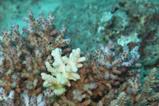In a world where most academic microbiology laboratories are still run by men, Laureate Prof. Madeleine van Oppen and Prof. Linda Blackall have led a highly productive environmental microbiology research group at The University of Melbourne. Working with these women for nearly eight years, I have been taught how to not only write a research proposal or run data analysis, but also how to navigate professional relationships and when to say no. In this research group, run by women, I was taught how to prioritise people.
The biggest asset in research is the people. Leading them is and should be regarded as a privilege. Yet, leaders regularly put research, academic prestige, and other politics ahead of the people they lead. It’s often excellence in research that places people in leadership or managerial positions, but being a great scientist does not by default make you a great manager. This continues to promote a cycle of toxic culture – where behaviours that are inappropriate not only on an academic but also an interpersonal level – are not only tolerated but in some cases even incentivised. As a result, academia has been facing a great resignation, particularly of early- and mid-career researchers, threatening to reduce the future potential of academic research.
This effect is particularly pronounced for women. Despite their predominant numbers at the undergraduate and graduate levels, women generally remain under-represented in academia. This is known as the ‘leaky pipeline effect’, in which women pursue academic advancement post-PhD at a lower rate than men, with many declining to take up academic positions. The data doesn’t lie: women represented less than 30% of researchers worldwide in 2016 according to the UNESCO Institute for Statistics and were awarded <33% of research grant funding from the National Science Foundation in 2022 (data not available for FY 2023 or 24) and only 37% of funding from the National Institutes of Health in 2024. Of note, a recent study found that male and female undergraduate students with a female mentor were more likely to report a favourable experience, indicating that hiring bias will affect all students.
In our lab, team members and our research culture are prioritised over research achievements. Similar to what others have reported, this approach to leadership has led to phenomenal research output. As it turns out, when staff and students feel that they are respected, they do great science too! This should come as no surprise as it’s well understood that toxic cultures have an enormous impact on our health, engagement, and productivity. When we feel comfortable and accepted in our role inside the research group, it becomes much easier to toss new ideas into a lab meeting to bounce them off other curious researchers. If you don’t have to fear that straying from your supposed lane might have negative outcomes, you become free to explore. Unfortunately, this curiosity often gets lost in the chase for the next best publication or grant, so it becomes the job of peers and especially lab heads to uphold this healthy culture together.
An accidental outcome of having a team led by women with a people-first approach is that the team itself has been dominated by female-identifying students and staff at a 3:1 ratio. Even with efforts to promote gender balance, the people who are reaching out to work in this group most often identify as women. And not just women, but other marginalised people such as scientists in the LGBTIQA+ community, Indigenous scientists, scientists working with disabilities, first-generation scientists, scientists of colour, etc. People find comfort and a place to belong here, and this translates to academic success.
So, what does prioritising people look like? My first experience with it was when I began my PhD Madeleine and Linda asked ME what I thought and what I wanted to do within the scope of the project. Yes, they wrote the grant that was awarded funding by the Australian government. It was their ideas and project design, but what was I interested in? What parts did I want to contribute to? Right from the get-go, my voice was given power and respect. And while our research may take many years or decades to have the desired outcomes, this effect was felt immediately. Throughout my PhD, I was encouraged to have extracurricular activities (I happen to be a weightlifter) and pursue any opportunities that were important to me. This meant that I did a lot of “extras” like sitting on committees and organising events. I was (and still am) a volunteer for Vision Australia and brought service dogs into the University. While some PIs would have felt this took time away from research and discouraged my participation, Madeleine and Linda saw the connections I was making, the experience in leadership I was gaining, and the positive impact on my mental health and well-being.
As I begin a new fellowship where I am no longer supervised in any capacity by these scientists, I find myself reflecting on the legacy they have left with me and what it will mean for my career. I’m an early career scientist by all definitions, but instead of stressing about the number of publications I have and other quantitative metrics, I’m thinking about finding funding to support Indigenous summer scholarships. I’m actively connecting with other scientists from around the world to build a collaborative network of brilliant scientists interested in working together on big problems. I’m pursuing opportunities to sit on committees where I can give more attention to diversity and inclusion issues. I’m starting a family without the stress of what it will mean for my career. I’m enjoying the experience of being a scientist.
The high need for innovation, lack of job security, and the publish-or-perish mentality are some of the factors that drive a toxic culture. This culture results in people avoiding asking questions, sharing ideas, and being curious and is not one that is people-centric. For PIs looking to make actionable changes to promote diversity in sciences, here are some suggestions on what to do:
- Include a personalised statement about your commitment to diversity and inclusion on your website.
- Volunteer to serve as a mentor within your department or topic-specific mentorship programs.
- Pay attention to your citations and check for gender and geographic balance. By fostering increased geographic representation in authorship and increasing representation of authors from countries in which research is undertaken, we can begin to address the systemic issues that are prevalent in science.
- If you’re routinely asked to speak at conferences, ask the organisers if one of your students/staff can give a talk instead.
- As you apply for funding, actively work to include funding for short-term scholarships to marginalised students or group activities such as a writing retreat.
If we keep treating each other like a transaction, we end up short-changed.
Further Reading:
Robbins JM, Ford MT, Tetrick LE. Perceived unfairness and employee health: a meta-analytic integration. J Appl Psychol. 2012; 97:235–272. doi: 10.1037/a0025408
Rasool SF, Wang M, Tang M, Saeed A, Iqbal J. How toxic workplace environment effects the employee engagement: the mediating role of organizational support and employee wellbeing. Int J Environ Res Public Health. 2021;18:2294. doi: 10.3390/ijerph18052294Figure.
Anjum A, Ming X, Siddiqi AF, Rasool SF. An empirical study analyzing job productivity in toxic workplace environments. Int J Environ Res Public Health. 2018;15:1035. doi: 10.3390/ijerph15051035
(series of articles) Breaking the bias in microbiology. Nat Microbiol 7, 341–342 (2022). https://doi.org/10.1038/s41564-022-01086-z











No comments yet